

 Parisian café or Japanese sushi?
Parisian café or Japanese sushi?
How is the traditional Parisian café doing? Everywhere you look in the French capital, you see a sushi restaurant or a sushi takeaway where there used to be a café. As soon as a café disappears, the Japanese are there.
We now have four sushi places 5-10 minutes’ walk from where we live. There were none when we moved to this neighbourhood 15 years ago. And if it isn’t sushi, it’s Thai or Chinese. Or possibly a trendy epicerie, which can best be described as a somewhat luxurious and nicely decorated grocery store.
More and more old-fashioned grocery stores disappear in Paris but reappear in this new guise. They do not sell everyday groceries but things you want occasionally: the finest cured ham, olive oil from Provence, fresh ravioli, delicious prepared meals, olives. You can buy wines here also, of course, often organic and “natural”. Sometimes they have a small area with a few tables and chairs where you can consume on the spot or just drink a glass of wine. For the very latest trend is that you should eat and drink surrounded by delicious food and wines.
But even if the Japanese are ready to take over any empty store they probably cannot threaten the “Arab”. The Arab us the shop on the corner, with the most generous opening hours imaginable. Anyone who has spent some time in France knows that I mean a small, somewhat tarnished grocery store that sells the essential things (including Moroccan wine) and is run by a North African. Each block has its own “Arab”. It’s like instead of having a Seven Eleven, but nicer. But to maintain their position, these stores should perhaps think about modernizing a bit? What about starting with couscous takeaway?
And if you love Paris and consider the traditional cafés as Parisian as the Eiffel Tower: I can reassure you, there are enough of the traditional Paris cafés left.
In this Brief we are starting to catch up with publishing articles that have been piling up in the pipeline during the busy wine travel season in September to November. Plenty to read. Save the links and click over to BKWine Magazine when you have some time to spare.
We are also very, very happy to tell you that our new book series, Guide to the World of Wine, only a few days ago was awarded the prize as best book in the annual book awards for food and drink book by the Swedish Gastronomic Academy. The whole series with four book, on Bordeaux, Burgundy, Tuscany, and Piedmont, won the awards. More on this next month. Unfortunately the books are only available in Swedish at the moment. Perhaps in English too some day…
And don’t forget our usual two “reminders”:
Take a look at next year’s wine tour program. Winter tours are full, but in the spring we offer Bordeaux and Champagne. Autumn tours to be announced soon.
And also: “Like” us, BKWine Magazine and BKWine Tours, on Facebook. Then you will make us particularly happy.
Enjoy the Brief!
Britt & Per
PS: Recommend to your friends to read the Brief !
What’s on at BKWine Tours
- Chile and Argentina in South America, January 28 – February 12, 2017 (fully booked)
- South Africa, February 24 – March 7, 2017, with Safari add-on and Golf add-on (fully booked)
- Champagne, April 19-23, 2017
- Bordeaux, May 3-7, 2017
For more information please contact us on email or on phone (we’re on French time), or go to our wine travel site on www.bkwinetours.com!
We also make custom designed wine tours – on-demand tours for you and a group of friends, for your company (maybe to scout new winegrowers?), for a special event… We can combine winery visits and wine touring with other activities: gastronomic workshops, visit to an oyster farm, truffles hunting, cheese making, and more. More info on the custom designed and bespoke BKWine wine tours and travel here!
Read our book(s)
We have written several wine books, nine at the last count. One of them has been translated to English; the others are (so far) only available in Swedish. This is the one that is available in English: Biodynamic, Organic and Natural Winemaking, Sustainable Viticulture and Viniculture
All our books are on wine, but on different subjects: wines of the Languedoc, wine growing and wine making, the wines of France, Tuscany, Bordeaux, Piedmont, Burgundy, Champagne. Several have won prestigeous prizes and awards. Read more on our wine books.
From the World of Wine
In Brief
In short, news and stuff from the world of wine.
Fighting esca and eutypiose, the “phylloxera” of our time
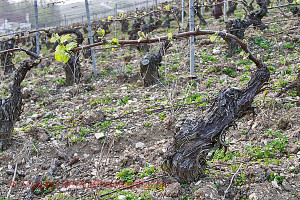 Some of the worst problems in the vineyards right now are esca and eutypiose, fungal diseases that affect the wood of the vine. There are no pesticides available since toxic sodium arsenite was banned some 15 years ago. But the company Bayer now believes that their product Esquive may be of a certain help to the wine growers.
Some of the worst problems in the vineyards right now are esca and eutypiose, fungal diseases that affect the wood of the vine. There are no pesticides available since toxic sodium arsenite was banned some 15 years ago. But the company Bayer now believes that their product Esquive may be of a certain help to the wine growers.
Several years of experimenting with Esquive have shown that if you protect the cut surfaces with Esquive during the winter pruning, a certain amount of the vines that are not yet affected by the diseases will be rescued. Esquive consists of the fungus Trichoderma atroviride and can, according to Bayer, also be used by organic growers. Read more: bayer-agri.fr
Christmas Wines: Elegant wines from Chile and Argentina
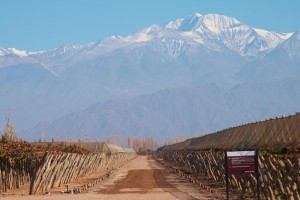 Initially Chile and Argentina profiled themselves as suppliers of powerful, easy drinking wines with a certain lack of elegance and sophistication. And it was a style that was very successful. But a lot has happened in recent years, at least when it comes to the more ambitious producers. I recently tasted some wines from these two countries and they all showed an impressive complexity, elegance and finesse.
Initially Chile and Argentina profiled themselves as suppliers of powerful, easy drinking wines with a certain lack of elegance and sophistication. And it was a style that was very successful. But a lot has happened in recent years, at least when it comes to the more ambitious producers. I recently tasted some wines from these two countries and they all showed an impressive complexity, elegance and finesse.
Here are some wines to look for:
- Alpamanta Estate Cabernet Sauvignon, Argentina (approx 20 euro)
- Altos Las Hormigas Malbec Reserva, Argentina (approx 25 euro)
- Colomé Auténtico Malbec, Calchaqui Valley, Salta, Argentina (approx 25 euro)
- Matetic EQ Pinot Noir 2012, Chile (approx 28 euro)
- Vigno Carignan, Gillmore Winery, 2012, Chile (approx 30 euro)
- Antiyal Pura Fe, Garnacha Syrah, 2013, Chile (approx 17 euro)
EcoSostenibleWine 2016: Miguel Torres fights for the environment
Miguel Torres is Spain’s most famous wine producer and a long time fighter for an environmentally friendly viticulture. According to him, the wine world is facing several major challenges. The two biggest are how to reduce the use of copper in organic farming and how to tackle global warming.
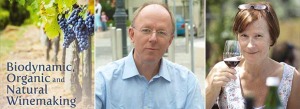 And it was precisely these two issues that were discussed on November 4 during the 5th Organic and Sustainable Viticulture and Climate Change Conference (EcoSostenibleWine) in Vilafranca del Penedès in Catalonia. Sponsor and main organizer was Miguel Torres. We were invited to participate in the debate because Miguel Torres has read our book Biodynamic, Organic and Natural Wines (great honour to have been read by such an authority!). During the conference, researchers presented various findings about how copper affects the soil, what could possibly replace it and how to reduce carbon emissions. We will return to these interesting topics shortly on BKWine Magazine. More on the conference: ecososteniblewine.com
And it was precisely these two issues that were discussed on November 4 during the 5th Organic and Sustainable Viticulture and Climate Change Conference (EcoSostenibleWine) in Vilafranca del Penedès in Catalonia. Sponsor and main organizer was Miguel Torres. We were invited to participate in the debate because Miguel Torres has read our book Biodynamic, Organic and Natural Wines (great honour to have been read by such an authority!). During the conference, researchers presented various findings about how copper affects the soil, what could possibly replace it and how to reduce carbon emissions. We will return to these interesting topics shortly on BKWine Magazine. More on the conference: ecososteniblewine.com
A new – dry – appellation in Sauternes?
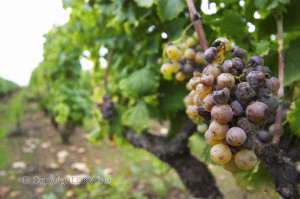 We do not drink enough sweet wines. I think many of you are like us. We like sweet wines and appreciate them a lot when we drink them, but these occasions are rare. Many sweet wine regions in the world struggle and now even the most famous of them all, Sauternes, is contemplating changes to keep up with modern times. The Sauternes appellation in Bordeaux produces only sweet wines and with very strict rules regarding yields. Many growers are very small and they find it hard to reach a profitable production.
We do not drink enough sweet wines. I think many of you are like us. We like sweet wines and appreciate them a lot when we drink them, but these occasions are rare. Many sweet wine regions in the world struggle and now even the most famous of them all, Sauternes, is contemplating changes to keep up with modern times. The Sauternes appellation in Bordeaux produces only sweet wines and with very strict rules regarding yields. Many growers are very small and they find it hard to reach a profitable production.
Some time ago a discussion started in Sauternes concerning the possibility of creating a new appellation, a Sauternes Sec, that is dry sauternes. That debate is on hold at the moment but a new one has taken off instead. A report on the future of Sauternes that was published recently proposed the introduction of a new appellation called Coteaux du Sauternais. This would be a cheaper and easy drinking sauternes with higher permissible yield (45 hectolitres per hectare instead of 25) and lower sugar content. Nothing, however, is yet decided and many people will probably want to have a saying in the matter. After all, the risk of the Sauternes brand being impoverished is at stake. Read more: vitisphere.com
Whites, but also reds, you will get plenty opportunity to taste them on the wine tour to Bordeaux in spring.
Water stress in Languedoc
The technical Dionysud wine fair was held in Beziers in Languedoc in November. A big discussion during the fair was about irrigation. Languedoc-Roussillon has a total of 240 000 hectares and only 24,000 are irrigated at the moment. It is too little, says the Chamber of Agriculture in the department of Hérault. The vineyards of Languedoc are nowadays in constant water stress. A study has now been initiated to determine the need for irrigation and, not least, to see from where the irrigation water can be taken.
The rules for irrigation today say that it is forbidden for all wines between August 15 and the harvest. Wines with the designation IGP and Vin de France are allowed to be irrigated until August 15 while the AOP wines can be irrigated only until May 1st. However, they can apply for permission to irrigate between June 15 and August 15 if the summer is really hot and dry. The old adage that “irrigation is not permitted in Europe” is long gone. Read more: vitisphere.com
Vinisud 2017
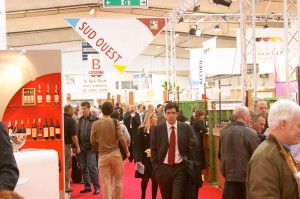 Vinisud, the big wine fair with Mediterranean profile, will open its doors on 29th of January 2017. Since its debut in 1994 the fair has been held every second year in Montpellier. Now, however, it is becoming an annual event. Around 1000 wine producers will be present in 2017. These come mainly from the southern French wine regions but also from Italy, Spain and other Mediterranean countries. Over 20 000 visitors are expected, including 6,000 from abroad.
Vinisud, the big wine fair with Mediterranean profile, will open its doors on 29th of January 2017. Since its debut in 1994 the fair has been held every second year in Montpellier. Now, however, it is becoming an annual event. Around 1000 wine producers will be present in 2017. These come mainly from the southern French wine regions but also from Italy, Spain and other Mediterranean countries. Over 20 000 visitors are expected, including 6,000 from abroad.
The number of exhibitors and visitors expected are fewer than the 2016 edition. Perhaps this is a natural consequence of the fair now being annual. Vinisud 2017 compensates by paying special attention to current trends, such as the sparkling Mediterranean wines which currently have great success on the export market. It will give young wine growers that have recently started their careers a boost in a special stand dedicated to them. Also wine tourism and bag in box will have their own stands. Vinisud, 29-31 Januari, 2017 in Montpellier (for professionals only).
Bordeaux will become more and more environmentally friendly
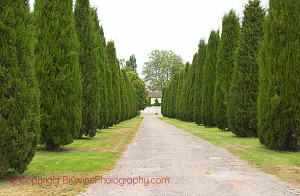 All French wine regions today have some sort of environmental plan. In Bordeaux 45 % of the surface of vine has a label of some sort for sustainable viticulture. The aim is to quickly reach 100 %. The main goals are to reduce the use of pesticides, reduce waste and increase recycling, reduce energy consumption, reduce carbon emissions, reduce water use, and have better control of wastewater and to protect local biodiversity. Ambitious goals. So far, 480 chateaux (6091 hectares) are certified organic. An additional 1330 hectares are currently converting. The biodynamic certified estates amount to 29 with a total of 696 hectares.
All French wine regions today have some sort of environmental plan. In Bordeaux 45 % of the surface of vine has a label of some sort for sustainable viticulture. The aim is to quickly reach 100 %. The main goals are to reduce the use of pesticides, reduce waste and increase recycling, reduce energy consumption, reduce carbon emissions, reduce water use, and have better control of wastewater and to protect local biodiversity. Ambitious goals. So far, 480 chateaux (6091 hectares) are certified organic. An additional 1330 hectares are currently converting. The biodynamic certified estates amount to 29 with a total of 696 hectares.
The rest of the certified chateaux have some kind of sustainability label. 32 chateaux (1200 hectares) have the label Haute Valeur Environnementale and 49 chateaux (2400 hectares) the label Terra Vitis. Other, lesser-known labels, include Area, Qualenvi, Agriconfiance, Destination Développement Durable and SME du Vin de Bordeaux. Bordeaux has a total of 112 000 hectares of wine-growing land. Read more on: agence-fleurie.com
Australian wines on their way out of the 10 year crisis
The last 10 years have been tough on the Australian wine industry. Lack of water has put many wine growers out of business. Almost 30 000 hectares of vines have been abandoned since 2006. A strong currency made export harder and Australian consumers got a taste for French and Italian wines. So, how is the industry coping now? Better. Wine exports are growing again and the trend is looking positive.
The most popular grape varieties in Australia are Shiraz, Cabernet Sauvignon and Merlot. Leader among the white wine varieties is Chardonnay followed by Sauvignon Blanc and Semillon. The total area of vines is now approximate 149 000 hectares. Most vineyards are dependent on irrigation. The most popular methods are drip irrigation and micro spray. 112 000 hectares are irrigated with these methods. Read more about the state of Australia meininger.de and abs.gov.au
Features
Features that we have published during the past month, with lots of reading for you.
Bubbles, whites and reds from Cask & Moestue
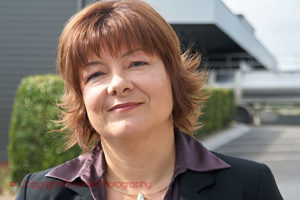 “It was time to venture out on another vinous mission. To taste wines from the importer Cask & Moestue. I tried things I have not tried before, first and foremost, and those that seemed more exciting for personal reasons. I tried far from everything. I neglected parts. Apologies for that.”
“It was time to venture out on another vinous mission. To taste wines from the importer Cask & Moestue. I tried things I have not tried before, first and foremost, and those that seemed more exciting for personal reasons. I tried far from everything. I neglected parts. Apologies for that.”
BKWine Magazine’s reporter Mattias Schyberg goes to an importer tasting and finds some delicioius wines worth recommending in the selections by Cask and Moestue. Champagne, chablis, Burgundy and much more. Read more on BKWine Magazine: Bubbles, whites and reds from Cask & Moestue.
The oseleta grape – the spice that boosts the Valpolicella from Masi
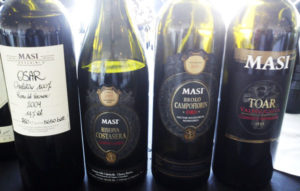 “Oseleta is an ancient grape that was rediscovered in the 80s by Sandro Boscaini, Masi’s owner. After having experimented with making wine on a small scale, he planted 18 hectares with oseleta. In 1990 he started to use the grape blended into Masi’s traditional wines and in 2000 came the first vintage of a pure oseleta wine, Osar. In 2000 the grape was allowed to be blended into all the wines of Valpolicella.”
“Oseleta is an ancient grape that was rediscovered in the 80s by Sandro Boscaini, Masi’s owner. After having experimented with making wine on a small scale, he planted 18 hectares with oseleta. In 1990 he started to use the grape blended into Masi’s traditional wines and in 2000 came the first vintage of a pure oseleta wine, Osar. In 2000 the grape was allowed to be blended into all the wines of Valpolicella.”
Read the rest of the article on this little-known grape treasure in Valpolicella in Mikael Karlin’s article on BKWine Magazine: The oseleta grape – the spice that boosts the Valpolicella from Masi.
Pierre Péters’ champagnes, with several new releases
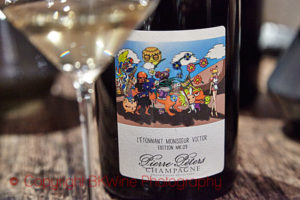 “Pierre Peters is one of the leading small growers in Champagne and can be found in Le Mesnil-sur-Oger, one of the grand cru villages of the Côte des Blancs. In this village the grape variety Chardonnay rules almost alone, and Le Mesnil-sur-Oger is one of the best villages of blanc de blancs Champagnes. Pierre Péters is headed today by Rodolphe Peters. Rodolphe had not only brought new releases and vintages but also two new champagnes that broaden the range of champagnes at the top: one late degorged version of the prestige champagne Les Chétillons and also the new L’Étonnant Monsieur Victor.”
“Pierre Peters is one of the leading small growers in Champagne and can be found in Le Mesnil-sur-Oger, one of the grand cru villages of the Côte des Blancs. In this village the grape variety Chardonnay rules almost alone, and Le Mesnil-sur-Oger is one of the best villages of blanc de blancs Champagnes. Pierre Péters is headed today by Rodolphe Peters. Rodolphe had not only brought new releases and vintages but also two new champagnes that broaden the range of champagnes at the top: one late degorged version of the prestige champagne Les Chétillons and also the new L’Étonnant Monsieur Victor.”
Read more on these outstanding champagnes in Tomas Eriksson’s article on BKWine Magazine: Pierre Péters’ champagnes, with several new releases.
You will get the chance to meet some of the most exciting growers on the wine tour to Champagne in April.
Wines with a bang from Stellenbosch in South Africa
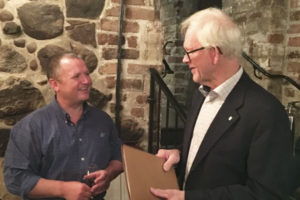 Abrie Beeslaar is the head winemaker at the Kanonkop winery (Cannon Hill), which is about 100 years old and has for many generations been run by the same family (Sauer / Krige), and is currently run by the brothers Paul and Johann Krige. The property is considered to produce some of South Africa’s best red wines thanks to talented winemakers of which Abrie Beeslaar is the third since 1973 when they started bottling under their own name.
Abrie Beeslaar is the head winemaker at the Kanonkop winery (Cannon Hill), which is about 100 years old and has for many generations been run by the same family (Sauer / Krige), and is currently run by the brothers Paul and Johann Krige. The property is considered to produce some of South Africa’s best red wines thanks to talented winemakers of which Abrie Beeslaar is the third since 1973 when they started bottling under their own name.
Kanonkop is today one of the most famous wine producers in South Africa. When Abrie Beeslaar came to Sweden he met BKWine Magazine’s reporter Carl-Erik Kanne and presented a selection of his wines. Read more: Wines with a bang from Stellenbosch in South Africa.
Uncorked: Good wines we have tasted recently, November 2016
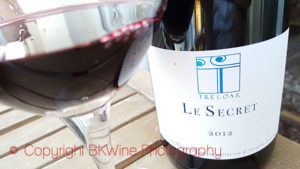 Uncorked: Under this heading we collect various wines that we have tasted, and liked, recently. It can be wines that we have had during dinner at home, at wine tastings, press lunches, visits to vineyards, or other occasions. We describe the wines just with a few short sentences, tasting notes that we hope will give you a short but accurate impression of what we thought of the wine, without delving into finer points tasting notes. Some inspiration for more wine discoveries! As well as a perspective on what to expect from older wines.
Uncorked: Under this heading we collect various wines that we have tasted, and liked, recently. It can be wines that we have had during dinner at home, at wine tastings, press lunches, visits to vineyards, or other occasions. We describe the wines just with a few short sentences, tasting notes that we hope will give you a short but accurate impression of what we thought of the wine, without delving into finer points tasting notes. Some inspiration for more wine discoveries! As well as a perspective on what to expect from older wines.
This month: Some really good white wines, young and old, from Languedoc, Roussillon, Burgundy, Bergerac and even the Czech Republic. Mature red Bordeaux, a 100 % Petit Verdot and two different styles of sparkling wine. Read more on BKWine Magazine: Uncorked: Good wines we have tasted recently, November 2016.
Argentina’s success and challenges, an interview with Madeleine Stenwreth MW
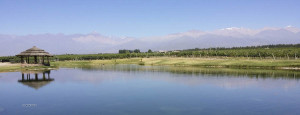 If you do not have your ear to the (wine) ground, it can be easy to miss the rapid development that Argentina’s wine industry has undergone in recent decades. From having appeared on the world wine scene in the early 90’s as a supplier of decent entry-level wines it has today become a full-fledged producer of world-class wines, but still often moderately priced. BKWine Magazine’s reporter Mikael Karlin met Madeleine Stenwreth MW to find out how this rocket-speed development occurred and where Argentina is heading today.
If you do not have your ear to the (wine) ground, it can be easy to miss the rapid development that Argentina’s wine industry has undergone in recent decades. From having appeared on the world wine scene in the early 90’s as a supplier of decent entry-level wines it has today become a full-fledged producer of world-class wines, but still often moderately priced. BKWine Magazine’s reporter Mikael Karlin met Madeleine Stenwreth MW to find out how this rocket-speed development occurred and where Argentina is heading today.
Read more on Argentina’s achievements in Mikael Karlin’s article on BKWine Magazine: Argentina’s success and challenges, an interview with Madeleine Stenwreth MW.
Impressive depth and breadth in a range of wines from Trapiche in Argentina
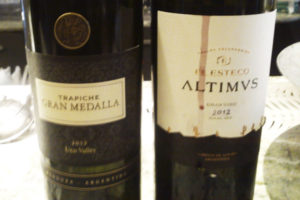 Grupo Peñaflor is one of Argentina’s biggest wine producers. The group includes the very famous name Trapiche, with a long history on the international market. One of the advantages of being big, as Peñaflor, is that you can experiment with grapes and locations with great variety. This was well illustrated by a selection of wines that chief winemaker Daniel Pi showed to BKWine Magazine’s reporter Mikael Karlin, who wonders if perhaps Argentina is worthy of becoming the next big wine trend.
Grupo Peñaflor is one of Argentina’s biggest wine producers. The group includes the very famous name Trapiche, with a long history on the international market. One of the advantages of being big, as Peñaflor, is that you can experiment with grapes and locations with great variety. This was well illustrated by a selection of wines that chief winemaker Daniel Pi showed to BKWine Magazine’s reporter Mikael Karlin, who wonders if perhaps Argentina is worthy of becoming the next big wine trend.
Read more on Trapiche’s great wines in Mikael Karlin’s article on BKWine Magazine: Impressive depth and breadth in a range of wines from Trapiche in Argentina.
Wine pioneers in Oregon, Craig Camp and Steve Hall at Troon Vineyard
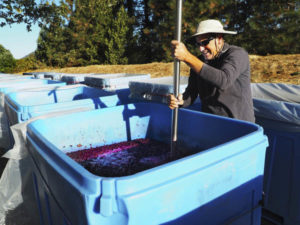 “I first met Craig Camp at a wine conference a few years ago. We follow each other on social media, but he really got my attention this past April with his post: ‘Leaving Forward.’ Craig Camp, late of Cornerstone Cellars in Sonoma, was ‘running towards’ Troon Vineyard in Southern Oregon’s Applegate Valley AVA. Intrigued, I reached out. Why did he leave Wine Country? Why Troon Vineyard? Why Southern Oregon? Would he be willing to share his story? Indeed. Here, Craig Camp and Troon Vineyard’s irrepressible wine maker Steve Hall recount their respective ‘leaps of faith’ from Napa Valley to Oregon. Fears, tears, and bliss included.”
“I first met Craig Camp at a wine conference a few years ago. We follow each other on social media, but he really got my attention this past April with his post: ‘Leaving Forward.’ Craig Camp, late of Cornerstone Cellars in Sonoma, was ‘running towards’ Troon Vineyard in Southern Oregon’s Applegate Valley AVA. Intrigued, I reached out. Why did he leave Wine Country? Why Troon Vineyard? Why Southern Oregon? Would he be willing to share his story? Indeed. Here, Craig Camp and Troon Vineyard’s irrepressible wine maker Steve Hall recount their respective ‘leaps of faith’ from Napa Valley to Oregon. Fears, tears, and bliss included.”
Read more in the article by BKWine Magazine’s contributor LM Archer: Wine pioneers in Oregon, Craig Camp and Steve Hall at Troon Vineyard.
Kanonkop – world’s best Pinotage?
”Kanonkop (like Rijk’s) has conquered the spot as one of South Africa’s top ten Pinotage wines eleven times since 1997. The contest started six years after Beyers Truter in 1991 was named “International Winemaker of the Year” thanks to his Kanonkop Pinotage 1989. That was the time it took for South Africa to realize that the Pinotage grape is a chance to distinguish itself as wine country, shortly after the dissolution of the apartheid government in 1991. So one can say that the story of Pinotage coincides with South Africa’s contemporary history.”
Read more in Mikael Karlin’s article on BKWine Magazine: Kanonkop – world’s best Pinotage?
Piedmont’s white wines; to be discovered!
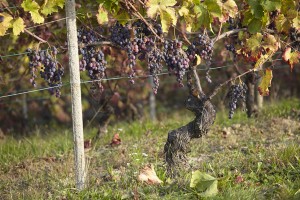 “35% of the wine in Piedmont is white… We are now on the third part of our little series about Piedmont. I have in previous articles on Piedmont talked about the red wines with a focus on the wines made from the Nebbiolo grape. […] There are also other interesting red grapes, Dolcetto, for example. But if you look past all the stunning reds produced here, there is a surprisingly large spread of different white grapes in this region. In total actually about 35% of the grapes grown in the Piedmont region are white.”
“35% of the wine in Piedmont is white… We are now on the third part of our little series about Piedmont. I have in previous articles on Piedmont talked about the red wines with a focus on the wines made from the Nebbiolo grape. […] There are also other interesting red grapes, Dolcetto, for example. But if you look past all the stunning reds produced here, there is a surprisingly large spread of different white grapes in this region. In total actually about 35% of the grapes grown in the Piedmont region are white.”
Read more on all the delicious and far too little known white wines of the Piedmont in Tobias Karlsson’s article on BKWine Magazine: Piedmont’s white wines; to be discovered!
Wine tours
Some information about current and future wine tours with BKWine.
Make someone happy this Christmas. Give a wine tour
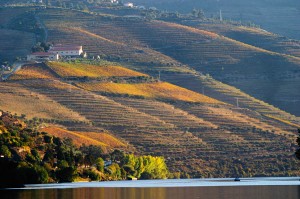 Father Christmas has stocked up with plenty of nice wine tours in the Santa Claus bag this year, we hope. There is plenty to choose from; you might want to give the present to that very special one or perhaps just to yourself. You can for example gift wrap a specific one of our scheduled tours or you can get a gift card that lets the happy one choose a tour him-/herself. In either case we can arrange for a nice gift cards for you that you can put in the bag, in the sock, under the Christmas tree or whatever is the custom in your country. Get in touch with Wine Claus soon to arrange for a wine tour gift for Christmas.
Father Christmas has stocked up with plenty of nice wine tours in the Santa Claus bag this year, we hope. There is plenty to choose from; you might want to give the present to that very special one or perhaps just to yourself. You can for example gift wrap a specific one of our scheduled tours or you can get a gift card that lets the happy one choose a tour him-/herself. In either case we can arrange for a nice gift cards for you that you can put in the bag, in the sock, under the Christmas tree or whatever is the custom in your country. Get in touch with Wine Claus soon to arrange for a wine tour gift for Christmas.
Champagne goes with everything?
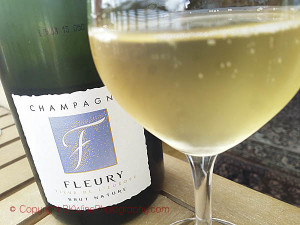 Is it possible to drink Champagne straight through an entire meal? Yes, it is! There is really nothing on the plate that you cannot combine with Champagne because there are so many different types of Champagnes. A powerful Champagne with concentration and ripeness can even be served with an entrecote. Some years back, when we did our first wine tours to Champagne, we were often served red wine with the cheese. But not anymore, luckily. Champagne is excellent to drink with cheese, not least the local ones like Brillat-Savarin, Langres and Chaource.
Is it possible to drink Champagne straight through an entire meal? Yes, it is! There is really nothing on the plate that you cannot combine with Champagne because there are so many different types of Champagnes. A powerful Champagne with concentration and ripeness can even be served with an entrecote. Some years back, when we did our first wine tours to Champagne, we were often served red wine with the cheese. But not anymore, luckily. Champagne is excellent to drink with cheese, not least the local ones like Brillat-Savarin, Langres and Chaource.
Our spring wine tour to Champagne will include some lovely lunches with Champagne through the whole meal. Often we start with the driest, a brut nature, as an aperitif. It is clean and crispy and always makes you hungry! The wine tour to Champagne takes place in April.
Large investments in Bordeaux
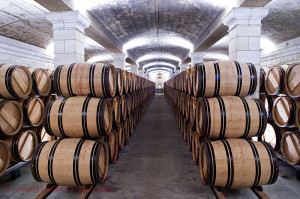 In Bordeaux, the wine chateaux invest. They invest in new stylish wine cellars, new oak barrels, new fermentation tanks, new optical sorting machines. And probably in other things as well. It is not just the well-known chateaux with thick wallets that invest. Though it is only these chateaux that can afford to hire designers and architects with an international reputation, like Philippe Starck and Jean Nouvel. The results are often spectacular. The lesser known but ambitious chateaux construct more modest but still very stylish and functional cellars.
In Bordeaux, the wine chateaux invest. They invest in new stylish wine cellars, new oak barrels, new fermentation tanks, new optical sorting machines. And probably in other things as well. It is not just the well-known chateaux with thick wallets that invest. Though it is only these chateaux that can afford to hire designers and architects with an international reputation, like Philippe Starck and Jean Nouvel. The results are often spectacular. The lesser known but ambitious chateaux construct more modest but still very stylish and functional cellars.
As a visitor you are easily impressed by a beautiful cellar. And as more chateaux open up for wine tourists it is becoming more and more important to impress. And maybe the wine also gets a bit better with a new cellar. Come and judge for yourself! Our spring wine tour to Bordeaux takes place in May.
Don’t be an egoist! Share with your friends and other wine enthusiasts! Forward the Brief to your friends! Suggest that they sign up for a free subscription !
© Copyright BKWine








